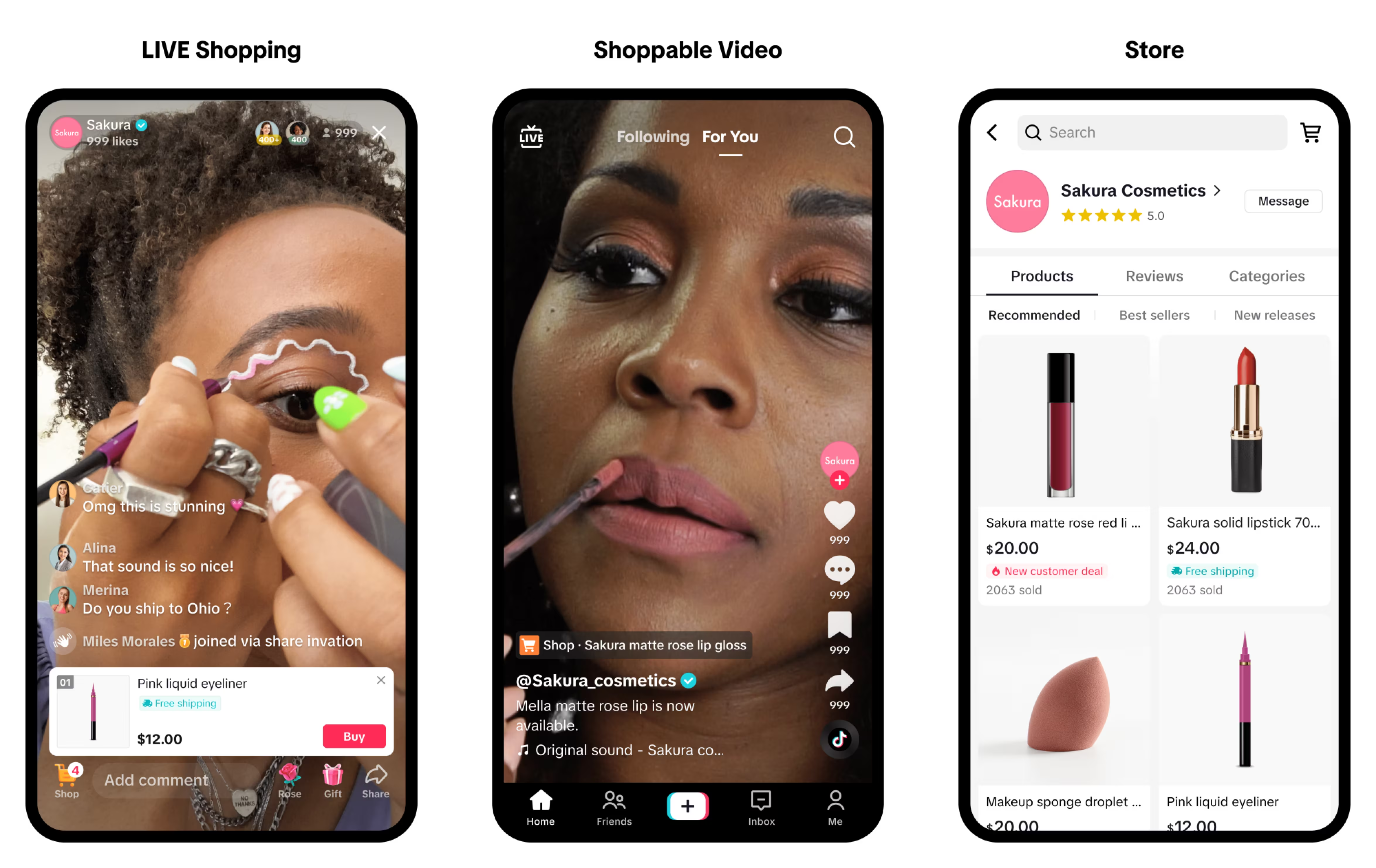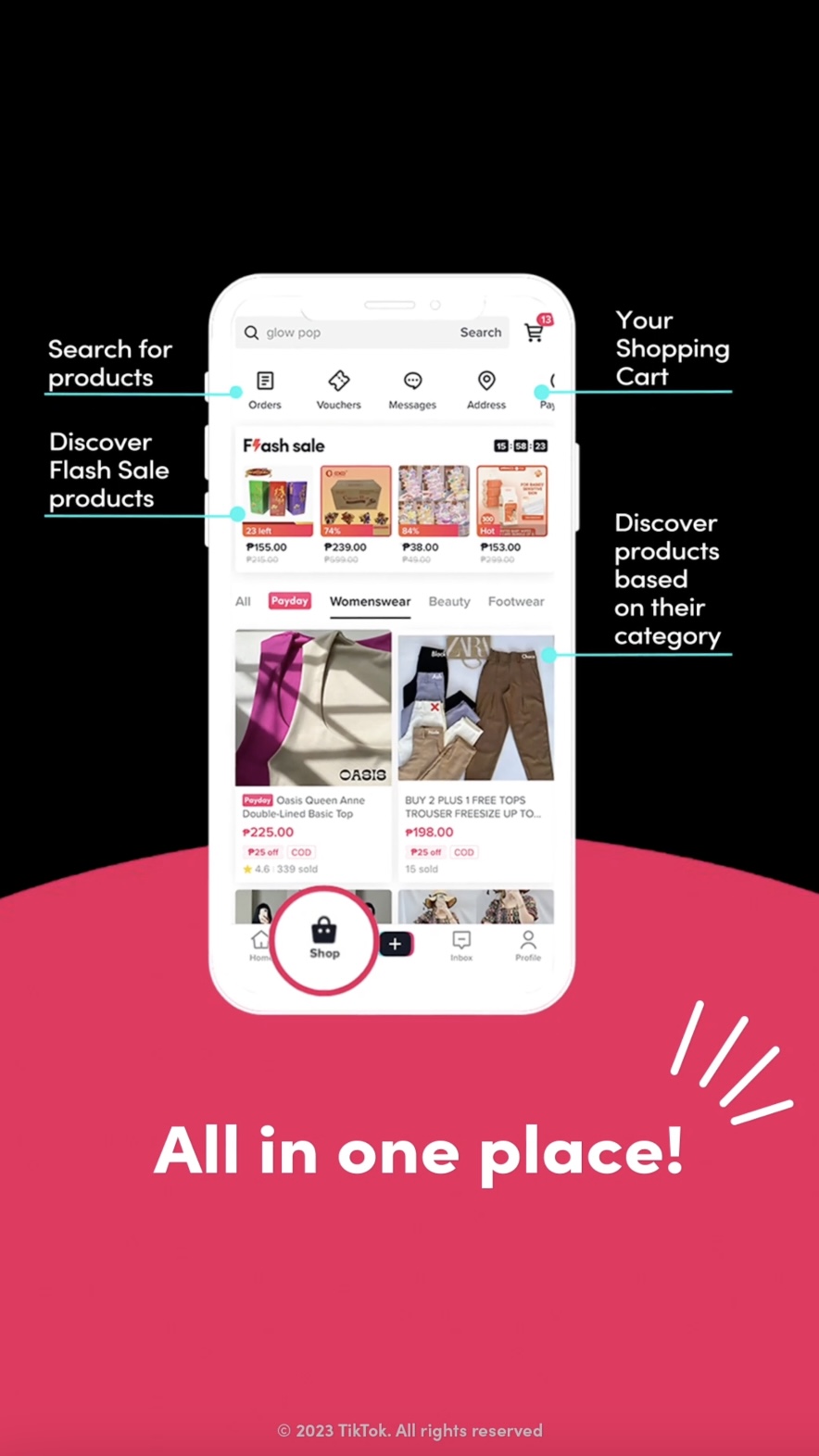TikTok Shop was named the fastest growing online retailer in 2024 by Nielsen IQ, reaching $33.2 billion in global sales. The US alone generated $9 billion in just 16 months after launch, marking a 650% increase. Marketing professionals need better TikTok Shop analytics strategies to track performance and understand what's driving sales in this algorithm-first marketplace.
TikTok Shop Analytics Comparison: Tracking Methods
Why TikTok Shop Analytics Matter Now
The platform added 11.9 million US buyers in 2024, according to eMarketer data. Unlike Amazon where product searches dominate, 58% of TikTok Shop's US sales came from short-form videos, 32% from in-app shops, and just 10% from livestreaming.
This content-first model means your TikTok Shop analytics approach needs to connect three data streams: video engagement metrics, conversion tracking, and customer retention patterns. Most sellers track the wrong metrics entirely—optimizing for views and likes while missing performance indicators that actually predict profitability.
Critical TikTok Shop Analytics Metrics
Revenue Metrics That Drive Decisions
- Gross Merchandise Value (GMV) tracks total sales across all channels. Beauty and Personal Care generated $2.49 billion in US GMV (22% of total sales), making it the highest-grossing category. Track this by product line to identify winners.
- Average Order Value (AOV) on TikTok Shop typically runs lower than other channels. US shoppers spent an average of $708 in 2024 through TikTok Shop, averaging $59 per purchase. If your AOV sits below $50, test bundling strategies to increase it by 30-40%.
- Repeat Purchase Rate shows long-term business health. TikTok Shop's repeat customer rate hit 81.3% in February 2024, up from 64% in November 2023. This metric matters more than one-time viral spikes.
Content Performance in TikTok Shop Analytics
- Video-to-Click Rate measures viewer engagement with product links. If you're getting 100,000 views with only 500 clicks (0.5%), your hook needs immediate work.
- Conversion Rate by Content Type differs dramatically. Videos drove $5.4 billion in GMV through influencer partnerships. Track each format separately to identify what converts best for your products.
- Watch Time and Completion Rate directly influence TikTok's algorithm. Videos keeping viewers watching get pushed to more buyers. Aim for 50%+ completion rates on product demonstrations.
Platform-Specific TikTok Shop Analytics Challenges
TikTok Shop's native dashboard shows basic metrics but misses critical insights predicting sustainable growth.
- Attribution Windows: TikTok defaults to 7-day click and 1-day view attribution. If you're not accounting for this in your TikTok Shop analytics, you'll undercount conversions happening outside these windows.
- Real-Time vs Finalized Data: The dashboard shows live performance including pending conversions. When you export reports, TikTok finalizes attribution. A campaign showing 100 conversions might export as 95 because some were still pending.
Always wait 48 hours after a campaign ends before pulling final performance reports. This prevents optimization decisions based on incomplete data.

Connecting TikTok Ads to Your TikTok Shop Analytics
97% of TikTok Shop purchasers also shop on Amazon, which means your customers aren't platform-exclusive. Your analytics strategy needs to track performance across channels.
This is where connecting your TikTok Ads data becomes essential for complete TikTok Shop analytics. You can't optimize ad spend without knowing which campaigns drive actual purchases versus just engagement. Check out how to connect TikTok Ads to Google Sheets to track advertising performance alongside your organic Shop metrics.
Most marketing professionals manage TikTok Shop alongside Facebook Shops, Google Shopping, and traditional ecommerce sites. Creating cross-platform Google Sheets reports lets you compare which platforms drive the lowest customer acquisition costs and highest lifetime value in one dashboard.
Category-Specific TikTok Shop Analytics Benchmarks
Health, automotive, and motorcycles showed 10x year-over-year growth in 2024—exceeding 1,000% each. If you're in these categories, your growth trajectory should significantly exceed platform averages.
Beauty products dominated with over $1 billion in US revenue, followed by womenswear at $621 million. These categories face more competition but also have proven product-market fit on the platform.
In 24 out of 27 categories, average transaction prices dropped by 14.08% in 2024. TikTok Newsroom reports show TikTok Shop traded higher AOV for volume growth, which means conversion rate optimization matters more than premium positioning for most sellers.
Three TikTok Shop Analytics Mistakes
Mistake 1: Optimizing for Vanity Metrics
Likes and video views don't pay bills. A video with 500,000 views and 10 sales performs worse than one with 50,000 views and 100 sales. Track GMV per video in your TikTok Shop analytics, not engagement rates.
Mistake 2: Ignoring Customer Retention
One viral product generating $50,000 in a week sounds impressive until you realize zero customers came back. Influencers generated $5.4 billion in GMV, but successful sellers balance one-time influencer spikes with strategies that build repeat buyers.
Mistake 3: Not Connecting Paid and Organic Data
Your TikTok Ads might be working great while organic Shop performance lags (or vice versa). Without unified reporting in your TikTok Shop analytics, you're flying blind on total customer acquisition costs and true ROAS.
Setting Up Your TikTok Shop Analytics Dashboard
Start with three separate data views:
- Daily Performance: GMV, orders, conversion rate, and top-selling products. Check this every morning to catch issues fast.
- Weekly Campaign Analysis: Which content formats, hooks, and product demonstrations drove the most sales? Use this to guide your content calendar.
- Monthly Strategic Review: Customer lifetime value, repeat purchase rate, and category performance trends. This identifies whether you're building a sustainable business or just chasing viral moments.
If you're spending more than 2 hours per week on manual reporting, automation pays for itself immediately.

What's Coming in 2025
TikTok Shop projects nearly 200% US growth in 2025 despite regulatory uncertainty, according to Momentum Works research. This growth means more competition, which makes TikTok Shop analytics even more critical.
The sellers who win will be those who move beyond basic metrics and build analytics systems that connect content performance, advertising data, and customer retention into a single strategic view.
Frequently Asked Questions
What's the difference between TikTok Shop analytics and TikTok Ads analytics?
TikTok Shop analytics track organic sales from your storefront, including product views, cart adds, and purchases from non-paid content. TikTok Ads analytics measure paid campaign performance like impressions, clicks, and conversion events from your advertising spend. You need both datasets to understand total customer acquisition costs. Shop analytics show what happens after discovery, while Ads analytics show how much you're paying to create that discovery. Most successful sellers track these separately but compare them weekly to calculate blended ROAS across paid and organic channels for complete visibility into performance.
How often should I check my TikTok Shop analytics dashboard?
Check daily performance metrics (GMV, orders, top products) every morning to catch issues immediately. Review weekly content performance every Monday to identify which video formats and product demonstrations drove the most sales. Conduct monthly strategic reviews of customer lifetime value and category trends. Daily checks prevent problems from compounding, weekly reviews inform your content strategy, and monthly analysis ensures you're building sustainable growth rather than chasing temporary viral spikes. If you're spending under $1,000 monthly on TikTok Shop, weekly checks are sufficient for most sellers.
Which TikTok Shop analytics metric predicts long-term success better than GMV?
Repeat purchase rate matters more than total sales for predicting sustainable business growth in your TikTok Shop analytics. A seller with $100,000 monthly GMV and 20% repeat customers faces constant acquisition costs, while a seller with $50,000 GMV and 75% repeat rate builds compound growth. The second seller spends less on customer acquisition and generates higher lifetime value per customer. Track how many buyers purchase twice within 60 days—this metric reveals whether you're building a brand or just moving inventory through one-time viral moments on the platform.
Can I track TikTok Shop analytics alongside other ecommerce platforms?
Yes, and you should integrate TikTok Shop analytics with other platforms. Most TikTok Shop buyers also use Amazon (97%), Etsy (55%), and other marketplaces, which means cross-platform tracking reveals your true market position. Export TikTok Shop data to Google Sheets or analytics platforms where you can compare performance across channels. Track metrics like customer acquisition cost, average order value, and conversion rate by platform to identify which channels deliver the best return. This comparison helps you allocate marketing budget more effectively and understand where your products naturally perform best.
What's causing data mismatches in my TikTok Shop analytics?
Three common causes create reporting discrepancies in TikTok Shop analytics: attribution window differences (TikTok defaults to 7-day click, 1-day view), timezone settings (dashboard uses account timezone while exports may use UTC), and real-time versus finalized data (dashboard shows pending conversions, exports show finalized attribution). To fix this, always export data with the same date range and attribution settings you're viewing in the platform. Wait 48 hours after a campaign ends before pulling final reports, which allows all conversions to fully attribute. Compare like-for-like periods using identical settings for accurate TikTok Shop analytics.
How do I calculate ROAS in TikTok Shop analytics?
Calculate Return on Ad Spend by dividing total conversion value by total advertising cost in your TikTok Shop analytics. If you spent $1,000 on TikTok Ads and generated $4,000 in attributed sales, your ROAS is 4:1 (or 400%). This calculation only works if you're accurately tracking which sales came from paid versus organic sources. Most sellers struggle with ROAS calculation because they don't separate organic Shop sales from Ads-driven purchases. Set up conversion tracking through TikTok Pixel to ensure accurate attribution, then export both Ads data and Shop data to calculate blended ROAS.
Should I focus on video views or conversion rate in TikTok Shop analytics?
Optimize for conversion rate after you've achieved minimum visibility thresholds in your TikTok Shop analytics. A video needs at least 10,000 views to generate meaningful conversion data—below that, you're optimizing random noise. Once you hit that threshold, focus entirely on conversion rate improvements. A video with 50,000 views and 2% conversion rate (1,000 purchases) outperforms one with 500,000 views and 0.3% conversion rate (1,500 purchases) because the first demonstrates product-market fit. Scale what converts, not what gets views in your TikTok Shop analytics strategy.







